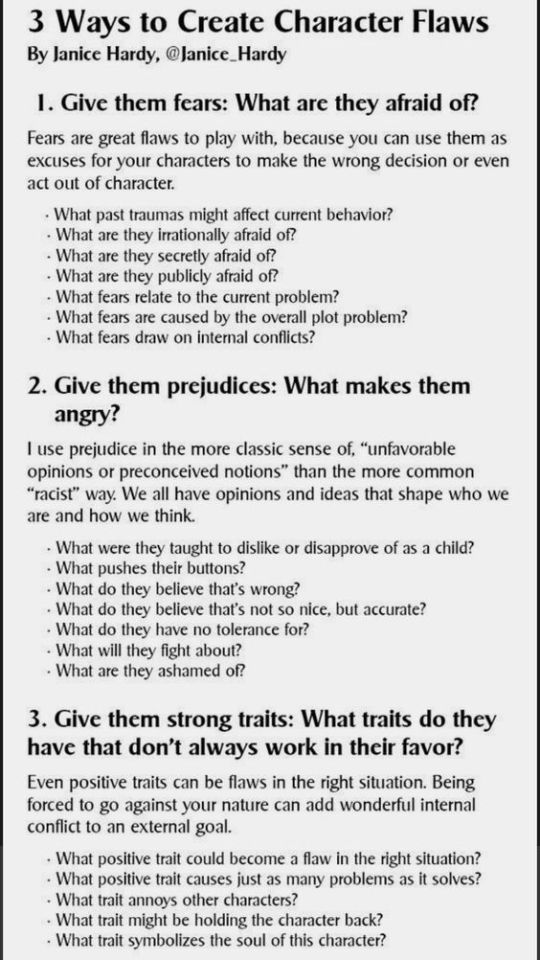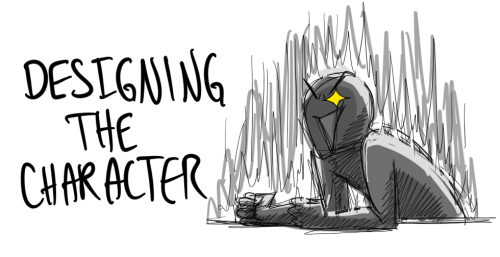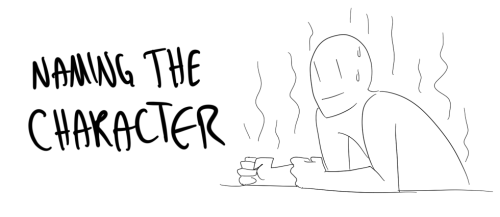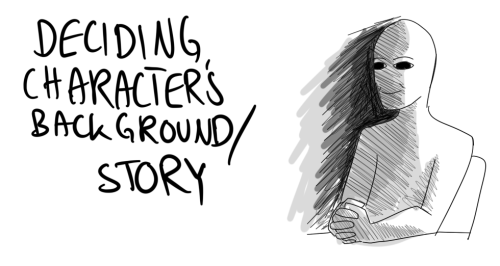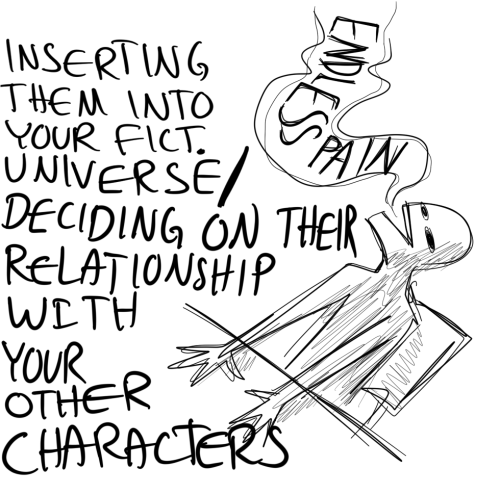Writing Body Language
Writing Body Language
How to Improve your writing
This is something that happens every day in your life. A shift of your eyebrow in skepticism, or the way your lip may twitch to a half smile cause you’re trying not to laugh. These behaviors are vital for writing in character, because not only do the allow you to visually see what is happening but it is also reaffirming whatever emotion your character is showing.
So why should you write it?
Much of human communication is non-verbal which means you need to also translate this non-verbal reaction in a post. It allows you to greatly enhance the emotions of another character and always another person to ‘visually’ see how they feel in a post. Most of all, this will add depth and volume to your post to make it feel more real. IT will make your character feel like a human instead of just another fictional person you look at from above.
Below you will find a list different type of emotions and what sort of body language can be exhibited to them.
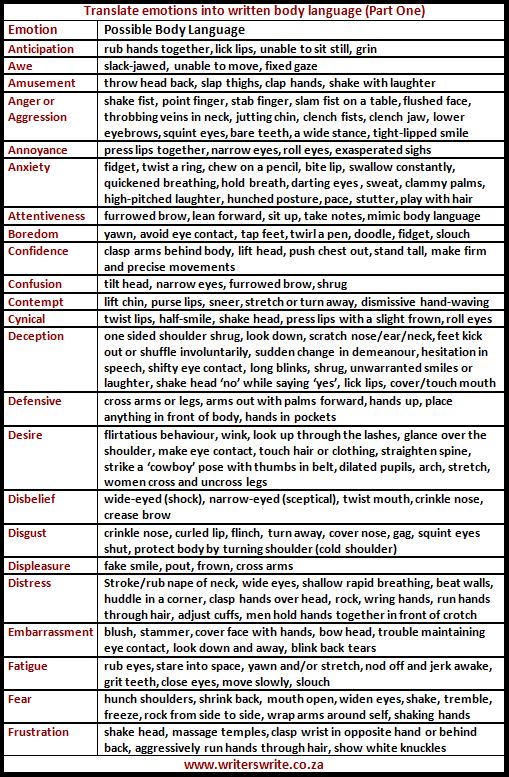
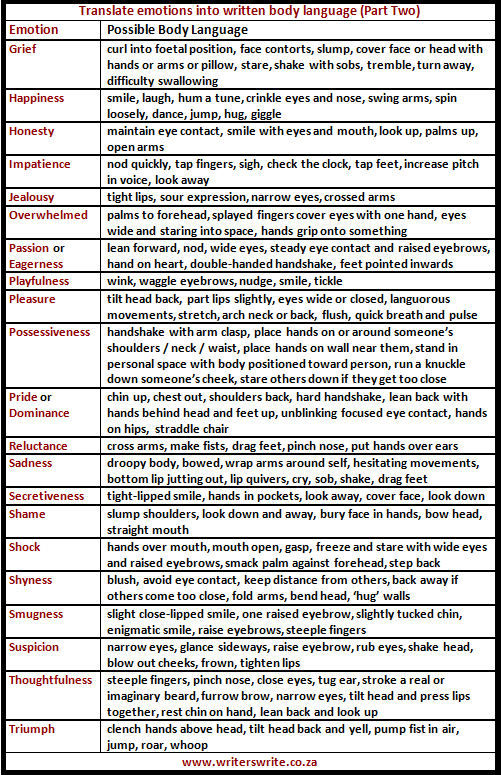
Three ways to accent an action.
When writing about emotions, there are different ways to verbally write them out. Each one is unique in their own way, allowing you to show more about the emotion.
Emphasize the Emotion. But doing this, you are expressing both the emotion and the body language. We’ll use a simple example. It’s short and simple yet you can sense he is happy. John felt so happy that he was humming a tune while walking down the hall.
Complicate the Emotion. Sometimes, even when you are feeling one emotion, deep down rooted underneath the facade of it all, there is actually an underlining emotion they feel. This is something you have to truly express otherwise no one will know. John felt so happy that he was humming a tune while walking down the hall. However, it was obvious by the way his nose crinkled that he was disgusted by the actions beforehand. Instead, John covered it up by appearing pleased today.
Contradict the Emotion. This is a little different than complicate. Contradicting means that you are claiming one thing when in fact its the other. In many ways, this has a variety of uses, from inner depth of the truth to what you see in person, or someone creating a wall. It could be considered a lie, but when is anything that easy? John felt so happy that he was humming a tune while walking down the hall. In truth, once he was in the classroom, his shoulders slumped and a pout crossed his lips when no one was around, showing just how displeased he was with the situation.
Remember that you do not always have to contradict or complicate anything. Sometimes all you need to do is emphasize and that will be just fine. You don’t always have to have an underlining complicated for an emotion to make it more enhanced.
Do be afraid to use the Thesaurus to also improve an emotion. Such things as “happy” is a nice emotional word, but think of how much more powerful it is when you heard some is “overjoyed” or “content.” She how these emotions matched up with a body language can give two different styles of happiness? Mix and match to find what works best for your character at the time.
More In Depth Information
What I’ve stated above is more of a simplistic overview. IF you truly want to improve yourself, go to this
LINK HERE
To see just how much body language can reveal about a person. You will find things such as how a person lies, how the eyes reaction, the positioning of a person in personal space, mouth, and head body language and so much more.
Use these resources to greatly increase the reactions of your character to another and create a more life-like world.
More Posts from Watergeus and Others
Body language cheat sheet for writers
As a writer, understanding and incorporating body language into your storytelling can greatly enhance your characters and their interactions. Here's a cheat sheet to help you describe body language effectively:
Facial Expressions:
* Raised eyebrows: Surprise, disbelief, or curiosity.
* Furrowed brow: Concentration, confusion, or frustration.
* Smiling: Happiness, amusement, or friendliness.
* Frowning: Disapproval, sadness, or concern.
* Lip biting: Nervousness, anticipation, or tension.
Eye Movements:
* Eye contact: Confidence, interest, or honesty.
* Avoiding eye contact: Shyness, guilt, or deception.
* Narrowed eyes: Suspicion, skepticism, or concentration.
* Wide eyes: Shock, fear, or surprise.
* Rolling eyes: Exasperation, annoyance, or disbelief.
Gestures:
* Crossing arms: Defensiveness, disagreement, or discomfort.
* Nervous fidgeting: Anxiety, restlessness, or impatience.
* Pointing: Assertiveness, emphasis, or accusation.
* Open palms: Honesty, openness, or sincerity.
* Hand on chin: Deep thought, contemplation, or evaluation.
Posture and Movement:
* Slumped shoulders: Defeat, sadness, or fatigue.
* Upright posture: Confidence, attentiveness, or authority.
* Pacing: Restlessness, agitation, or contemplation.
* Tapping foot: Impatience, annoyance, or frustration.
* Leaning in: Interest, engagement, or curiosity.
Touch:
* Hugging: Affection, comfort, or warmth.
* Handshake: Greeting, introduction, or agreement.
* Patting on the back: Encouragement, praise, or camaraderie.
* Clenched fists: Anger, determination, or frustration.
* Brushing hair behind the ear: Nervousness, coyness, or flirtation.
Mirroring:
* When two characters unconsciously mimic each other's body language, it indicates rapport, connection, or empathy.
Nodding:
* A subtle nod can convey agreement, understanding, or encouragement.
Crossed legs:
* Crossed legs can indicate relaxation or a casual, nonchalant attitude.
Tapping fingers:
* Impatience, anticipation, or nervousness can be expressed through rhythmic finger tapping.
Hand on the chest:
* Placing a hand on the chest can convey sincerity, empathy, or a heartfelt emotion.
- Tilting the head:
* Tilting the head to the side can suggest curiosity, attentiveness, or interest.
Rubbing the temples:
* Rubbing the temples can indicate stress, fatigue, or a headache.
Chin stroking:
* Stroking the chin while in thought can portray contemplation, decision-making, or intellectual curiosity.
Arms crossed behind the back:
* This posture can indicate authority, confidence, or a composed demeanor.
Tilted body posture:
* Leaning slightly towards someone can suggest interest, attraction, or engagement in a conversation.
Biting nails:
* Nail-biting can reveal anxiety, nervousness, or tension.
Foot tapping:
* Rapid or impatient foot tapping can show agitation, restlessness, or eagerness.
Squinting:
* Squinting the eyes can signal suspicion, doubt, or an attempt to focus on something.
Shifting weight from foot to foot:
* Shifting weight can imply discomfort, unease, or anticipation.
Covering the mouth while speaking:
* This gesture can indicate hesitation, embarrassment, or the desire to hide something.
Remember that body language can vary across different cultures and individuals, so consider your character's background and personality while describing their movements. Additionally, body language is best used in combination with dialogue and internal thoughts to create a more nuanced portrayal of your characters.
Happy writing!
So... I found this and now it keeps coming to mind. You hear about "life-changing writing advice" all the time and usually its really not—but honestly this is it man.
I'm going to try it.

ᴡʀɪᴛɪɴɢ ʙᴏᴅʏ ʟᴀɴɢᴜᴀɢᴇ
Anger
Anger is one expression of fight-or-flight mode — an automatic, instinctive reaction to a threat. In many cases, there is an underlying fear of being harmed. Thanks to autonomic nervous system arousal, the heart rate increases, pupils dilate, and the face may flush. Other signs of anger
Balling the fists
Crossing the arms tightly
Clenching the fists once arms are crossed
Tight-lipped smile
Clenched teeth
Shaking a finger like a club
Stabbing a finger at someone
Attraction
Pupils dilate
Women will cross and uncross legs to draw attention to them
Mirroring – (usually unconsciously) mimicking the other person’s body language
Closed to Conversation
Keeping the hands in the pockets (esp. men)
Arms and legs crossed
Sitting back
Folding the hands together on a table (creates a barrier)
The “figure-four” leg cross (setting the ankle of one leg on the knee of the other) and then grabbing the lower half of the top leg with both hands.
Openness and Honesty
Exposure of the palms
Arms and legs unfolded
Leaning forward
Submissive Signals
Smiling – that’s why some people smile when they’re upset or afraid
Slumping the shoulders
Doing anything to appear smaller
Distress
Men in particular have a tendency to stroke or rub the nape of the neck when they’re upset. It acts as a self-soothing gesture to deal with a “pain in the neck.”
Crossed arms – arms act like a protective barrier
Self-hugging – arms are crossed, hands gripping upper arms
One-arm cross – one arm crosses the body to hold or touch the other arm – women keep a hand on a purse or bag strap to make this look more natural
Clutching a purse, briefcase, or bag with both arms
Adjusting cuffs or cuff-links (men’s version of the purse-strap grab)
Folding the hands together in front of the crotch (men)
Lying
Lying causes a subtle tingling in the face and neck, so the gestures below are attempts to eliminate that feeling
Covering the mouth – can be like a shh gesture, or they may cover the mouth completely – some people try to cover it by coughing
Touching or rubbing the nose or just below the nose – often a quick, small gesture, not a scratch
Rubbing the eyes (especially men)
Scratching the neck with the index finger
Superiority, Confidence, Power, Dominance
Steepling the fingers (aka setting the tips of the fingers together)
Folding the hands behind the back
Thumbs sticking out from pockets when hands are in pockets (can be front or back pockets)
Hands on hips
Straddling a chair
Hands folded behind the head while sitting up (in men)
[source]
Oh my gosh. I just found this website that walks you though creating a believable society. It breaks each facet down into individual questions and makes it so simple! It seems really helpful for worldbuilding!
Vampires & Vampire Fact Database
While I have I’ve written fiction about werewolves and studied werewolf folklore and pop culture for my entire life both passionately and professionally, they are not the only monsters I study. I also study all other kinds of mythology and folklore, and vampires take perhaps second place only to werewolves. All my sources are thoroughly checked by myself and others, and I take very seriously sharing only accurate information about any and all folklore and myth, as well as from popular culture.
I also do vampire facts! Currently, werewolf/vampire/other folklore facts are on hold from their regular schedule while I compile and publish a fully coherent, fully sourced book entitled Werewolf Facts: A Guidebook to Folklore vs Pop Culture! Give me a follow to stay up to date with all the latest news. There may also be a book on vampire facts in the future!
Still, every now and then, I post a new bit of info about the folklore of vampires. You’ll find those under both the Folklore tag and the Vampire Fact tag. You can also check my Vampires tag for other vampire-related things, including asks and reblogs.
The following is a convenient database of all the vampire facts I’ve written, for easy reference.
Vampire Fact Database
Etymology - The history and meaning behind the word “vampire.”
What IS a vampire? - What exactly is a vampire, anyway, and how do you define one? How does folklore define one? Are there different kinds?
Fangs - Did vampires have fangs in folklore? Where did the fang thing even come from? The answer might surprise you.
Animal Associations - Are vampires really associated with things like bats or wolves - or anything else?
Sunlight - Did vampires in folklore actually burn up in the sunlight?
Weaknesses - Vampire weaknesses in folklore and how that stacks up to the most commonly seen ones in pop culture.
Becoming a Vampire - A comparison of how people “became” vampires in pop culture versus how that happens in folklore - all the most common ones, at least.
Intelligence - How smart are vampires in folklore, anyway?
Can vampirism be cured? - Is it possible in folklore to actually cure someone of being a vampire?
Vampire Hunters - Was there such a thing as “vampire hunters” in folklore?
Physical Appearance - What did vampires look like in folklore?
How to Identify a Vampire - How could you tell if someone was a vampire, anyway?
The Importance of Dracula - How important was Dracula to all vampire concepts?
Association with Disease - Were vampires in folklore actually associated with disease?
Please note I will continually be updating this list as more vampire facts are posted, so be sure to come visit my page again for any new additions!
Other helpful vampire info, tips, and more:
(coming soon!)
I also write fiction, and much of it includes or focuses on various kind of folklore and mythology and monsters, especially my medieval fantasy universe, Wulfgard. For more info, take a look at my Writing List!
I also have a Patreon, where I would love your support (and you get goodies for it!). I also have a Twitter.
Substitutes For "Dead Parents"
Okay you guys! I mentioned this in a past post, but when it comes to family, some of ya'll are just... not creative. And don't get me wrong, having deceased parents is deep, dark, and hard, but at this point, a lot of readers simply overlook that because it's just that common. Not to mention, a lot of you guys aren't doing nearly enough with that information! So, for this post, I'll give some new examples relating to "family struggles!"
>> Neglect: Neglectful parents often don't give their child enough attention, time, or care. They don't always hate their kid; quite the opposite, really, they can still love their offspring and are simply unaware that they are being neglectful. This happens for a multitude of reasons: all their attention is focused on a different child, they're busy, or they're just uninterested in their kid's activities.
>> Abuse: Abuse is rather straightforward; it can be physical, mental, or even both. Even if it's only physical abuse, it can heavily damage the child's mental health and make them question their self-worth.
>> Fighting: I think that a lot of us have endured our parents fighting, and I'm fully confident that none of us enjoyed it. It's incredibly difficult for a kid to listen to their parents fight without knowing how to stop it, being stuck in the middle, and even worse, being the center of the argument. As it escalates, the child may even feel neglected, because their parents are only focused on each other.
>> Absence: Like neglect, these parents don't devote nearly enough attention and time to their child. However, this is because they are hardly present in the household to begin with. Normally, it's their career that keeps them away, leaving their kid to raise themselves.
>> Controlling: Oftentimes, controlling parents are found in, believe it or not, more successful households. Kids who have parents that own a successful business or are powerful in general are sometimes raised to follow those footsteps regardless if they want to or not. If they don't want to, as a result, they are kept on a tight leash. Controlling parents can also be found in stricter households.
>> Toxicity: Toxicity, a form of emotional abuse, can come in many forms, gaslighting, demeaning words, constant criticism, comparison, etc. Frequently, the child is unaware that their parents are being toxic until a third party points it out to them. This is because they've only known their parents acting in toxic manners; thus, it becomes their norm. However, it's also entirely possible for the parent to be oblivious to the fact that they're being toxic.
>> Distant: Being distant doesn't always have to be because of some crazy reason; they might've been a very happy and close family once, but as time passes on, they just simply start drifting in their separate ways. It's not the same as neglect or an absence; the child is usually able to adjust to it easier, and it might've even been their choice to be distanced from their parents.
>> Child Responsibility: This is a scenario where the kid acts more like a parental figure--they have to take care of both themselves and their family. In some situations, they also have to work in order to supply their family with enough money to be able to pay for life necessities. This normally happens when a/the parent(s) are out of commission and struggle to provide for their family. If the household is poor, the child might be working alongside their parents in an attempt to make their lives easier.
Did I miss anything? Let me know what you guys think about these substitutes!
Happy writing~
3hks :D
Writing Notes: Stages of Decomposition

The decomposition process occurs in several stages following death:
Pallor mortis
Algor mortis
Rigor mortis
Cadaveric spasm
Lividity
Putrefaction
Decomposition
Skeletonization
PALLOR MORTIS
The first stage of death.
Occurs once blood stops circulating in the body.
The cessation of an oxygenated blood flow to the capillaries beneath the skin causes the deceased to pale in appearance.
In non-Caucasians, the pallor may appear to develop an unusual hue; the skin will lose any natural lustre and appears more waxen.
Occurs quite quickly, within about 10 minutes after death.
ALGOR MORTIS
The cooling of the body after death.
The cooling process will be influenced by many factors, including the deceased’s clothing, or whether they are covered with bed linen such as blankets or duvets.
The body will typically cool to the ambient room temperature, but this alters if there is heating in the room or if there is a constant draught cooling the body.
RIGOR MORTIS
Can occur between 2 and 6 hours after death.
Factors including temperature can greatly affect this.
Caused by the muscles partially contracting, and the lack of aerobic respiration means that the muscles cannot relax from the contraction, leaving them tense, subsequently resulting in the stiffening we associate with rigor mortis.
This stage typically begins in the head, starting with the eyes, mouth, jaw and neck, and progresses right through the body.
The process is concluded approximately 12 hours after death (although, again, certain variables may occur) and lasts between 24 and 72 hours depending on circumstances.
Contrary to popular belief, rigor mortis is not a permanent state and is in fact reversed, with the muscles relaxing in the same order in which they initially stiffened.
The reversing process also takes approximately 12 hours, when the body returns to its un-contracted state.
It is possible to ‘break’ rigor mortis by manipulating and flexing the limbs. This is usually done by undertakers, pathologists or crime scene investigators who are attempting to examine or move a body – or by a murderer trying to hide their victim in the closet or the boot of a car.
CADAVERIC SPASM
A phenomenon that can be misinterpreted as rigor mortis.
The instantaneous stiffening of the body (most commonly the hands) following a traumatic death.
Unlike rigor mortis, the stiffening of the affected limb is permanent and is not reversed, causing the deceased to maintain the rigidity until such time as putrefaction causes breakdown of the particular muscle group.
Examples:
The deceased following an air crash were later discovered still clutching their seatbelts or arm rests in a final, desperate act of survival.
In a drowning case, the victim was discovered with grass from the riverbank still grasped in their hand.
Perhaps the most famous case of cadaveric spasm involves the rock band Nirvana’s lead singer, Kurt Cobain. Cobain reportedly committed suicide in April 1994. His body was discovered a few days after his death with a shotgun wound to the head, and tests revealed he had large traces of heroin in his system. He was reportedly discovered still clutching the gun in his left hand, due to cadaveric spasm. However, a great deal of controversy surrounds the veracity of this latter assumption, and indeed the cause of his death, with many people insisting and attempting to prove that he died as the result of foul play rather than suicide.
LIVIDITY
Also known as livor mortis, hypostasis, or suggillation.
Once blood can no longer circulate, it will gravitate towards the lowest point of the body.
Example: A supine body will display pinkish/purple patches of discoloration where the blood has settled in the back and along the thighs.
Occurs about 30 minutes after death, but will not necessarily be noticeable until at least 2 hours afterwards as the pooling process intensifies and becomes visible, finally peaking up to between 8 and 12 hours later.
Once it is complete, the lividity process cannot be reversed.
Therefore a body discovered lying on its side, but with staining evident in the back and shoulders, must have been moved at some point from what would have been a supine position at the time of death.
It is worth noting that if the body has had contact with the floor, a wall or other solid surface, lividity would not occur at the points of contact as the pressure would not allow the blood to seep through the capillaries and pool. The specific area of pressure will be the same colour as the rest of the body and a pattern of contact may well be evident.
PUTREFACTION
Derives from the Latin putrefacere, meaning ‘to make rotten’.
The body becomes rotten through the process known as autolysis, which is the liquefaction of bodily tissue and organs and the breakdown of proteins within the body due to the increased presence of bacteria.
The first visible sign is the discoloration of the skin in the area of the abdomen.
Bacteria released from the intestine cause the body to become bloated with a mixture of gases; over time these will leak out, and the smell will intensify to unbearable proportions.
Typically, this will attract flies that will lay eggs, which develop into maggots.
Bloating is most evident in the stomach area, genitals and face, which can become unrecognizable as the tongue and eyes are forced to protrude due to the pressure of the build-up of gases in the body.
At this stage, the body will also begin to lose hair.
The organs typically decompose in a particular order: starting with the stomach, followed by the intestines, heart, liver, brain, lungs, kidney, bladder and uterus/prostate.
Once all the gases have escaped the skin begins to turn black: this stage is called ‘black putrefaction’.
As with all the other stages of death so far, the rate of putrefaction depends on temperature and location. A body exposed to the air above ground will decompose more quickly than a body left in water or buried below ground.
During putrefaction, blistering of the skin and fermentation can also occur:
Fermentation - a type of mould that will grow on the surface of the body. This mould appears white, and is slimy or furry in texture. It also releases a very strong, unpleasant, cheesy smell.
As the putrefaction process comes to an end, fly and maggot activity will become less, which leads to the next stage.
DECOMPOSITION
The body is an organic substance comprising organisms that can be broken down by chemical decomposition.
If the body is outside, any remains that have not been scavenged or consumed by maggots will liquefy and seep into the surrounding soil.
Thus when the body decomposes it is effectively recycled and returned to nature.
SKELETONIZATION
The final stage of death is known as ‘dry decay’, when the cadaver has all but dried out: the soft tissue has all gone and only the skeleton remains.
If the cadaver is outside, not only is it exposed to the elements but it also becomes food for scavengers such as rats, crows or foxes.
As the remains are scavenged, the body parts become dispersed so it is not unusual to find skeletal remains some distance from where the body lay at the point of death.
The way in which skeletal remains are scattered in such cases is of interest to archaeologists, and is referred to as taphonomy.
Where a body has lain undiscovered at home for a period of time it has also been known for family pets, typically dogs, to feed on the body. The natural instinct of a pet is to attempt to arouse the deceased by licking them, but once it gets hungry, its survival instinct will take over and it will consider the body as little more than carrion: it will act with the same natural instinct as a scavenger in the wild, which will feed on any corpse, be it animal or human, if it is starving.
Obviously the number of pets, the body mass of the deceased and the time lapse before the body is discovered will influence to what extent it has been devoured.
For further research on the stages of decomposition and the factors that affect it, look up body farms. These are medical facilities where bodies are donated for research purposes so scientists can specifically observe the decomposition process. However, be aware that some of the images are quite graphic.
Source ⚜ More: References ⚜ Autopsy ⚜ Pain & Violence ⚜ Injuries Bereavement ⚜ Death & Sacrifice ⚜ Cheating Death ⚜ Death Conceptions
Words to Use Instead Of...
Beautiful
stunning
gorgeous
breath-taking
lovely
jaw-dropping
pretty
glowing
dazzling
exquisite
angelic
radiant
ravishing
excellent
ideal
sightly
wonderful
elegant
bewitching
captivating
mesmerizing
enthralling
magnetic
impressive
tasteful
charming
desirable
enchanting
Interesting
stricking
unusual
appealing
absorbing
srresting
gripping
riveting
alluring
amusing
exceptional
fascinating
impressive
provocative
prepossessing
exotic
readable
refreshing
entrancing
exceptional
Good
honest
upright
dutiful
enthical
pure
guiltless
lily-white
reputable
righteous
tractable
obedient
incorrupt
respectable
honorable
inculpable
irreprehensible
praiseworthy
well-behaved
uncorrupted
irreproachable
Awesome
wondrous
amazing
out-of-this-world
phenomenal
remarkable
stunning
fascinating
astounding
awe-inspiring
extraordinary
impressive
incredible
mind-blowing
mind-boggling
miraculous
stupendous
Cute
endeaing
adorable
lovable
sweet
lovely
appealing
engaging
delightful
darling charming
enchanting
attractive
bonny
cutesy
adorbs
dear
twee
Shy
modest
sel-effacing
sheepish
timid
way
reserved
unassured
skittish
chary
coy
hesitant
humble
introverted
unsocial
bashful
awkward
apprehensive
If you like my blog, buy me a coffee☕ and find me on instagram! 📸
-
 mysticlay liked this · 1 month ago
mysticlay liked this · 1 month ago -
 morgen-zon liked this · 1 month ago
morgen-zon liked this · 1 month ago -
 antihell liked this · 1 month ago
antihell liked this · 1 month ago -
 sweetsummerfling liked this · 1 month ago
sweetsummerfling liked this · 1 month ago -
 licogli liked this · 1 month ago
licogli liked this · 1 month ago -
 writeshine reblogged this · 1 month ago
writeshine reblogged this · 1 month ago -
 roselyn-writing reblogged this · 2 months ago
roselyn-writing reblogged this · 2 months ago -
 roselyn-writing liked this · 2 months ago
roselyn-writing liked this · 2 months ago -
 salutetomeimyouramericanqueen liked this · 2 months ago
salutetomeimyouramericanqueen liked this · 2 months ago -
 strannik53439 reblogged this · 3 months ago
strannik53439 reblogged this · 3 months ago -
 strannik53439 liked this · 3 months ago
strannik53439 liked this · 3 months ago -
 kiixxzz liked this · 3 months ago
kiixxzz liked this · 3 months ago -
 gvbricl-a liked this · 3 months ago
gvbricl-a liked this · 3 months ago -
 90percentprocrastination reblogged this · 3 months ago
90percentprocrastination reblogged this · 3 months ago -
 personalquestion reblogged this · 3 months ago
personalquestion reblogged this · 3 months ago -
 personalquestion liked this · 3 months ago
personalquestion liked this · 3 months ago -
 hoppity-scotch liked this · 3 months ago
hoppity-scotch liked this · 3 months ago -
 wicked-science-source liked this · 3 months ago
wicked-science-source liked this · 3 months ago -
 vilihrcek liked this · 3 months ago
vilihrcek liked this · 3 months ago -
 vilihrcek reblogged this · 3 months ago
vilihrcek reblogged this · 3 months ago -
 alexisavalon liked this · 3 months ago
alexisavalon liked this · 3 months ago -
 sourcitrusph2 liked this · 3 months ago
sourcitrusph2 liked this · 3 months ago -
 theoraeeken liked this · 3 months ago
theoraeeken liked this · 3 months ago -
 llenne-siu reblogged this · 3 months ago
llenne-siu reblogged this · 3 months ago -
 wehavebiggerproblems reblogged this · 3 months ago
wehavebiggerproblems reblogged this · 3 months ago -
 skitskatdacat63 reblogged this · 3 months ago
skitskatdacat63 reblogged this · 3 months ago -
 skitskatdacat63 liked this · 3 months ago
skitskatdacat63 liked this · 3 months ago -
 beechicory reblogged this · 3 months ago
beechicory reblogged this · 3 months ago -
 beechicory liked this · 3 months ago
beechicory liked this · 3 months ago -
 movetonet reblogged this · 3 months ago
movetonet reblogged this · 3 months ago -
 diamondrose015 liked this · 4 months ago
diamondrose015 liked this · 4 months ago -
 scribblermerlin liked this · 4 months ago
scribblermerlin liked this · 4 months ago -
 ideeasinspiration reblogged this · 4 months ago
ideeasinspiration reblogged this · 4 months ago -
 feyr liked this · 4 months ago
feyr liked this · 4 months ago -
 bookshelfbrunette reblogged this · 4 months ago
bookshelfbrunette reblogged this · 4 months ago -
 blue-batty-coco liked this · 4 months ago
blue-batty-coco liked this · 4 months ago -
 transparententhusiastmentality liked this · 4 months ago
transparententhusiastmentality liked this · 4 months ago -
 witchygagirl liked this · 5 months ago
witchygagirl liked this · 5 months ago -
 snooky-rooky liked this · 5 months ago
snooky-rooky liked this · 5 months ago -
 camelsmammalsandrabbits liked this · 5 months ago
camelsmammalsandrabbits liked this · 5 months ago -
 watergeus reblogged this · 5 months ago
watergeus reblogged this · 5 months ago -
 equestrianolmypics1996 liked this · 5 months ago
equestrianolmypics1996 liked this · 5 months ago -
 dat-writer-life reblogged this · 6 months ago
dat-writer-life reblogged this · 6 months ago -
 anna806fq liked this · 6 months ago
anna806fq liked this · 6 months ago -
 aer-krene reblogged this · 6 months ago
aer-krene reblogged this · 6 months ago -
 nekuroi reblogged this · 6 months ago
nekuroi reblogged this · 6 months ago
